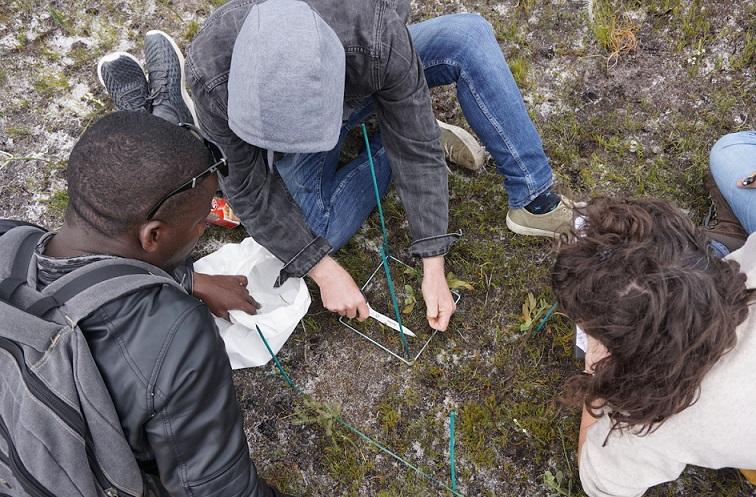- Home
- Worldwide
- CIRAD worldwide
- Projects
- PHYTOVIRUS project
Measuring and mapping plant virus diversity on an ecosystem scale - PHYTOVIRUS

© P. Roumagnac, CIRAD
Issues
Emerging plant diseases, which are largely caused by plant viruses, are a threat to food security and economic stability. However, there have not yet been any studies to produce a comprehensive picture of the geographical distribution of plant viruses, including both the number of plant virus species (species richness) and the evenness of their distribution in any environment on Earth. This lack of knowledge is an obstacle to our overall understanding of how plant viruses adapt, and indeed of how ecosystems function. This also limits our ability to develop truly universal predictive models of plant virus emergence.
Description
We intend to test the following two hypotheses within the project:
- Plant community structure affects plant virus community structure. We will be testing whether the richness, composition, density and biomass of the species that make up the plant community may be predictors of plant virus species richness.
- The molecular evolution of viruses is slower in non-cultivated than in cultivated zones. We will be testing whether agriculture may foster viruses that multiply rapidly, are transmitted quickly and are highly virulent.
The project centres on three scientific objectives:
- To test whether botanical species richness affects plant virus species richness in natural and cultivated zones.
- To conduct experiments to study the effect of several plant community parameters on plant virus species richness.
- To analyse the evolutionary traces within the genomes of the plant viruses identified.
Expected changes
- On a scientific level: a better understanding of the geographical distribution of plant virus diversity. The virus diversity map and improved knowledge of the governing factors will be a major step towards a clearer understanding of the dynamics of varietal diversity within agro-ecosystems and identifying and quantifying the risk factors for the emergence of new plant viruses.
- On a methodological level: developing the Oxford Nanopore MinION approach for plant virology. In the medium term, the development of this approach will have a range of applications in terms of diagnosis and epidemiosurveillance. It is also of strategic importance for the VISACANE sugarcane quarantine facility housed at CIRAD, in terms of increased efficiency (better diagnoses) and autonomy (sequencing in the laboratory and eventually in the field).
- On a development level: transferring the use of the Oxford Nanopore MinION approach for plant virology to several of our partners in the global South. This will enable them to produce high-throughput sequences relatively cheaply. Its successful transfer would drastically improve epidemiosurveillance networks in Africa, by limiting the time between diseased plant sampling and molecular diagnosis results, making it possible to detect known viruses and reveal others that are new and could potentially emerge.
Contract partner
- Agence Nationale de la Recherche
Scientific partners
- INRAE (Bordeaux)
- ANSES (Angers)
- Conservatoire Botanique du Mascarin
- Tour du Valat
- University of Cape Town
- Arizona State University
- Western Cape University
























